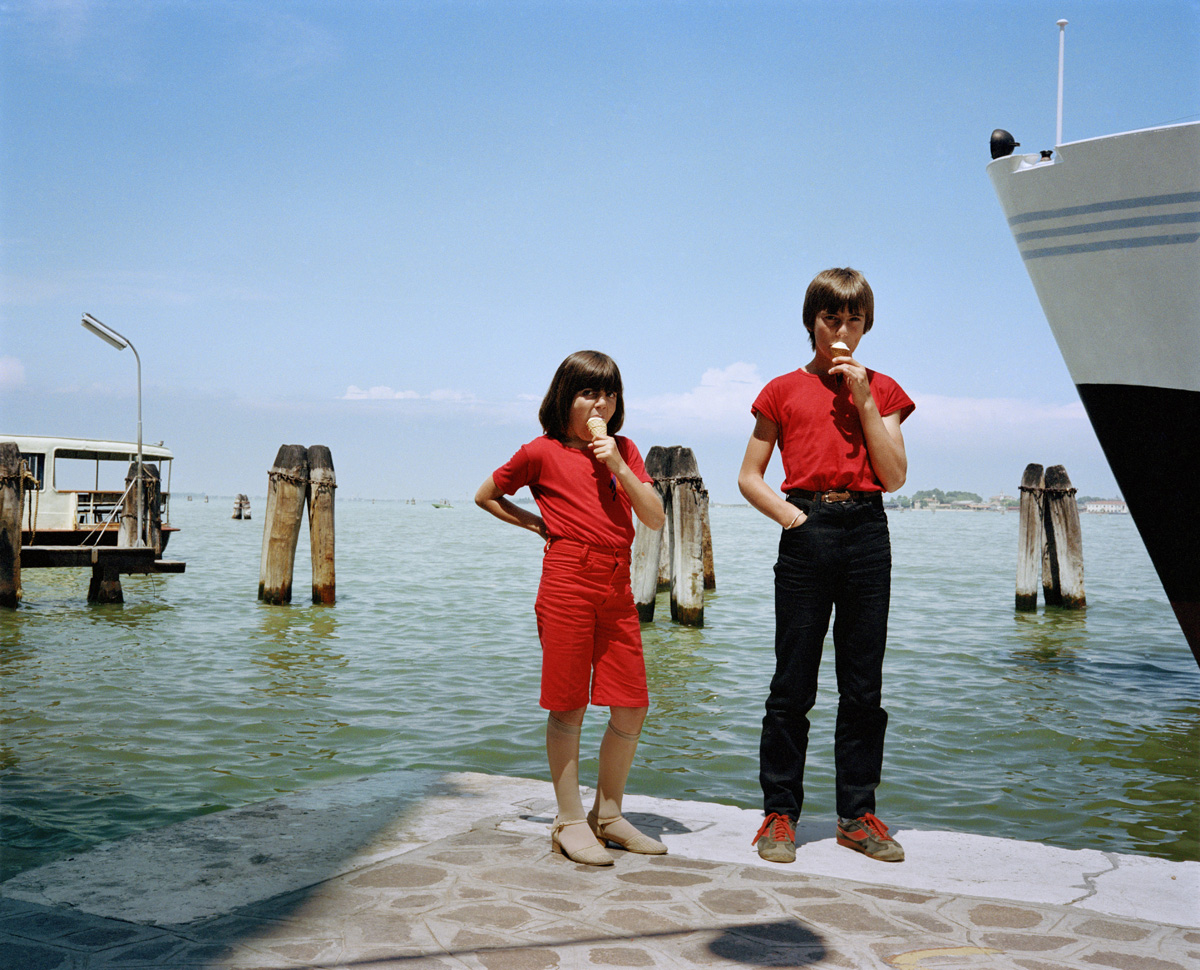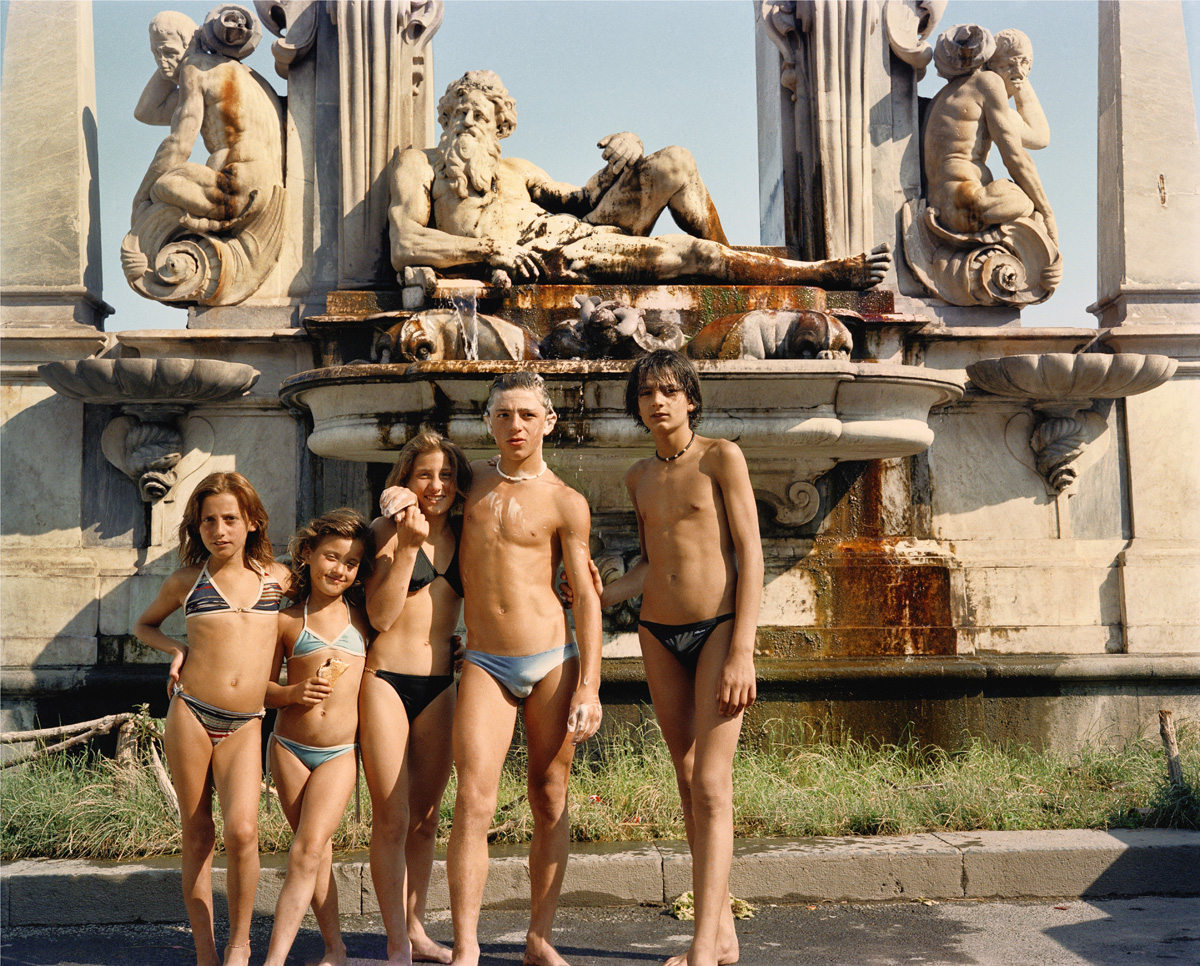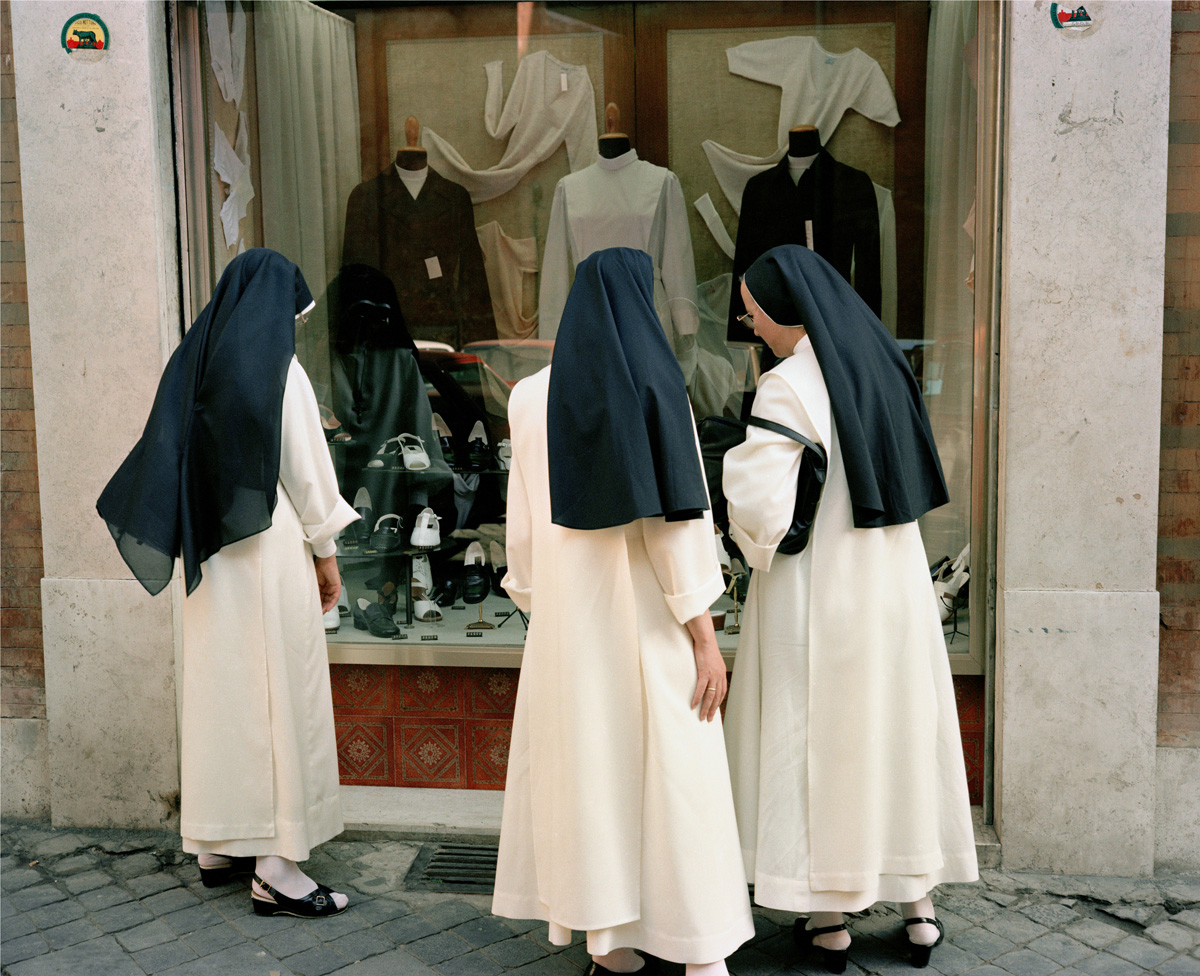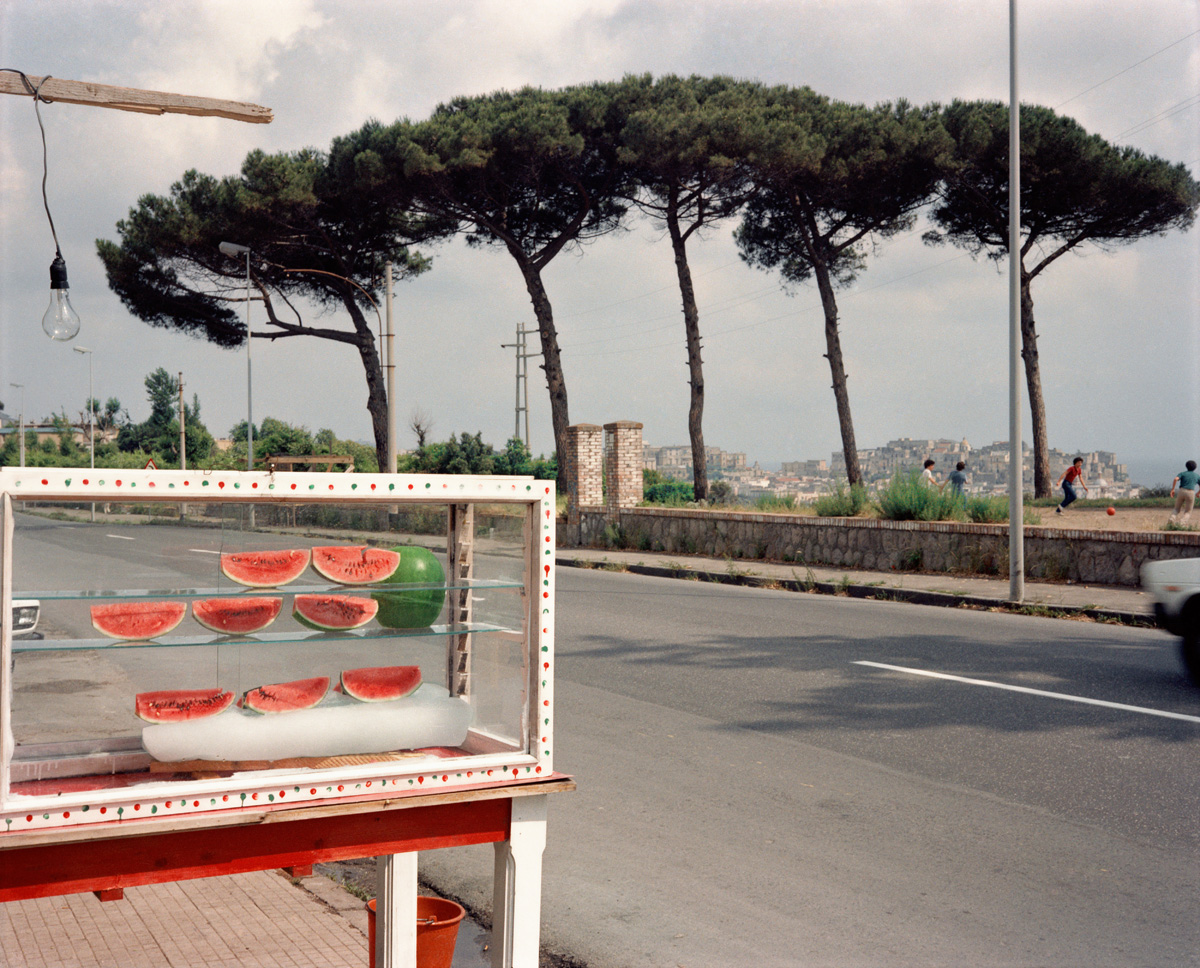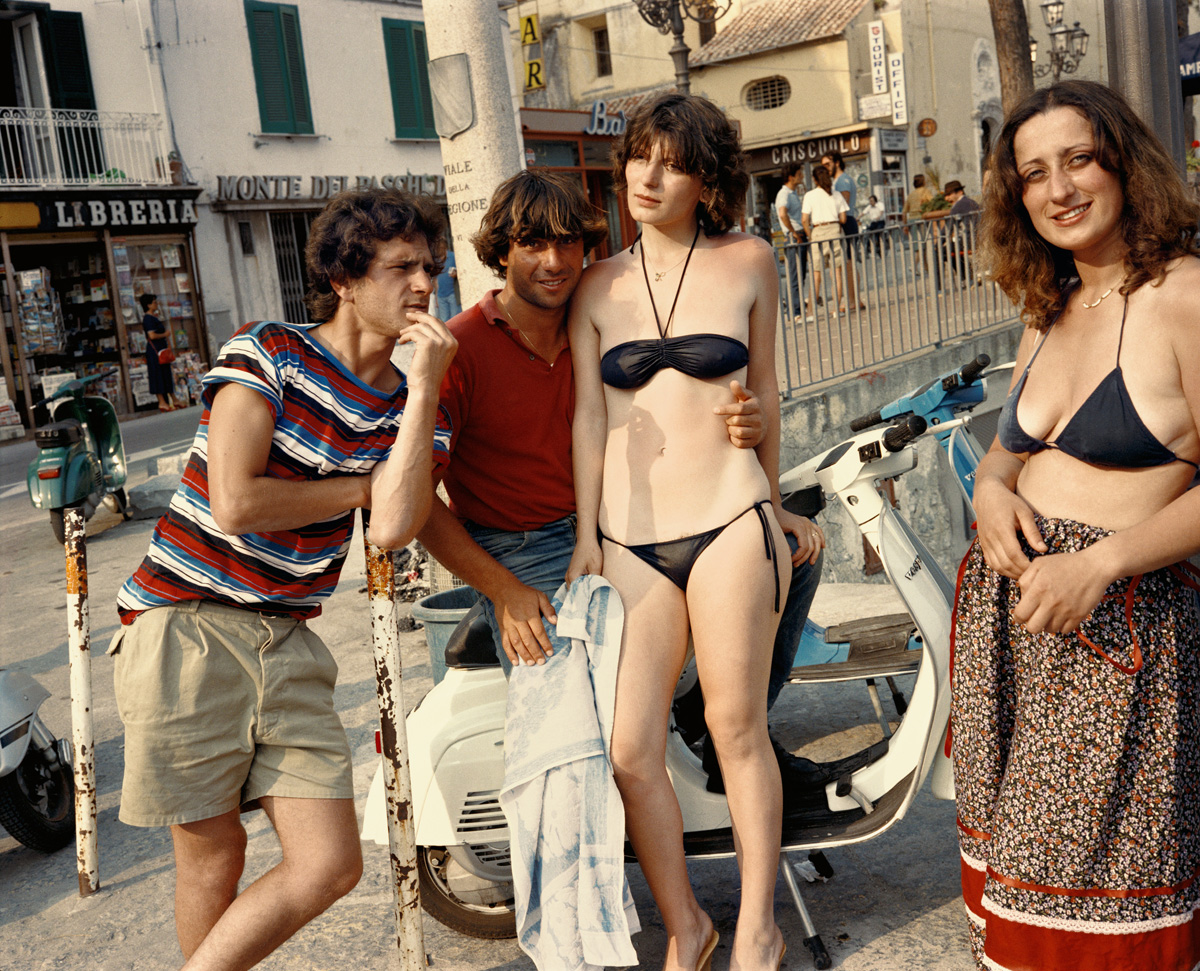Book Intro by Max Kozloff
Within many of these photographs couples can be seen kissing, although not always at quarters intimate with the camera. Such affection on Italian streets flowered like a sudden, charming bloom in an indifferent planter. Amore was a common spectacle in Rome, Venice and Florence during the early 1980s, when Charles Traub, a serial visitor from New York, freshened at the sight of it. By the look of things, he was active in the course of a perpetual tourist season, crowded with excited visitors and locals, doing their scene. A bit like Anita Ekberg 20 years earlier, at that same Fontana di Trevi, they, too, were getting wet. As Fellini had incorporated Bernini, Traub alludes to “Vita” by changing it to “Via” in the Dolce of those years.
He describes the pleasures of the senses and of the flesh in a playful manner too serious for a vacationer. What attracts his eye is at the expense of the monuments, though they play a sly and necessary role as background. Traub’s chief motifs are youthful, supple, contemporary bodies in summer dress or undress. Behind them can be glimpsed the nudities of the gods in their more oracular exchanges. The interplay between animate and inanimate forms is carried out in chance and, sometimes in droll combinations, not always on an elevated level. Two black-garbed men of the cloth are about to pass a motorbike whose handlebars are decorated with the plaster haunches and legs of a lithe store mannequin. The priests ignore this provocation with a certain ingenuity that the photographer takes in.
He is interested in who looks at what or away, and possibly why. Heroic signature moments in the Italian urbanscape do not get the attention they generally claim, because the distracted moment at issue is the itinerant photographer’s, not the immobile cliché. This young man, ever mindful of his upbringing in Louisville, Kentucky, was not accustomed to the exhibitionistic atmosphere of the Eternal City. For him, the audience, in all its spontaneity, counts for far more than the stony performers. He was the conspicuous voyeur among those whose gaze was unpredictable, but for whom there was plenty to see. As an outsider, Traub gathered some watchful impressions resonant of a culture.
In one frame, we’re confronted with a number of people’s backs. They’re in a group fixated on a palace with maybe a three-star status, not totally visible beyond their heads. The companion picture shows that same group, with the difference that one of its members, a beautiful young woman, has turned anxiously to discover the photographer’s act, inscribed by his shadow on another woman’s dress. It’s a slight incident but one with enough erotic energy to give it a charge. Perhaps more characteristic because recurrent is the distinguishing process itself, a moment acted out when some one turns away, consciously or not, and declines to be of the crowd. This happens with certain men, reflective and a bit gruff, who walk in a separate mood, out of tune with their fellow citizens. They are with the passersby—physically, that is—but not of them in spirit. It’s tempting to think of these males as representative of an older generation, inhospitable to young voices and leisure time.
Finally, there are moments of something unexpected in these scenes, for they are studies of needed rest and of loneliness. The built environment overwhelms isolated visitors who seem to have collapsed upon themselves. That space is out of scale with modern curiosity, as well as present memory. And more than that, it speaks of past vainglory, which is a little embarrassing for natives to be proud. From bathing beauties to tired pilgrims, the panorama of Dolce Via unfolds itself, in the shrewdly casual mode of the street photographer. Back in the U.S., that mode had been carried forward by the likes of Lee Friedlander and Garry Winogrand, whose Women are Beautiful was a venture in (a sometimes unsubtle) male voyeurism. It was a work of appetite on the prowl, the camera acting as a substitute for more urgent instincts. By contrast, Traub does not neglect promptings of desire, but they are subordinate to his excitement in being in Italy itself. And his color is evidence of it, the chroma of the visitors standing off against the whiteness of statues. These were occasions to celebrate, which he brings off with underplayed skill.
Website text about Dolce Via:
Dolce Via brings an American aesthetic to the delights of the streets and byways of Italy. This volume is the first comprehensive compendium of Charles H. Traub’s vivid, color photographs made in early 1980s, from Milan to Marsala. Characteristic of his imagery is a candid intimacy that combines humor and spontaneity, which makes us long for an Italy that maybe only once was. Brilliant blues, reds, and yellows engulf the baroque posturing and gestures of strangers and ordinary people who become fond archetypical caricatures. Traub’s friend and guide, the late photographer Luigi Ghirri, said of the imagery, “You see our foibles, strip us bare, make love through the camera, and then venerate us.”
Information from the book itself (Dolce Via - Italy in the 1980s)
The photographs in this book were taken traveling throughout Italy numerous times, mostly in the early 1980s. They were made with a Plaubel Makina 67, using Kodak color negative film. The pictures were shown in prestigious museums and galleries the mid-1980s. This is the first monograph from a large selection of work produced in that period.

